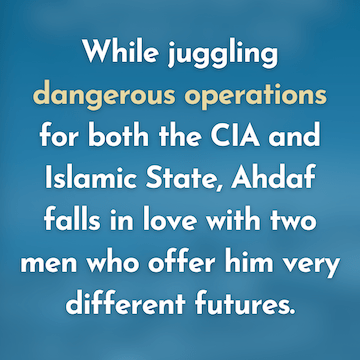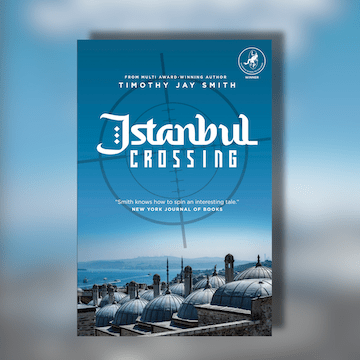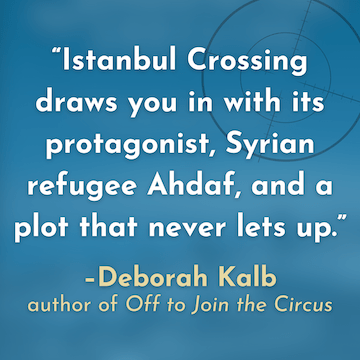
Sigurdsson’s grave.
It was the entire city of Reykjavik that played host to Iceland Noir this afternoon, as conference guests braved the cold winds to hear Iceland’s crime authors – both new and established – read from their books at locations relevant to the scenes. It was coordinated by the Ulfhildur Dagsdottir of the Reykjavik City Library.
Iceland’s most famous crime author Arnaldur Indridason wasn’t part of the event this year, but a passage from his as yet untranslated novel Silent Kill was read out by Maria Thordardottir from the library as part of the Bloodtrail tour. This took place in the middle of the city’s oldest graveyard, next to the burial stone of Jon Sigurdsson, leader of Iceland’s independence movement in the the 19th century and considered to be the father of the nation. The cheeky passage from the book had been translated by Iceland Noir organiser Quentin Bates, and saw characters sneak into the cemetery for sex only to discover a corpse.
At the University of Iceland, British author Michael Ridpath read from his book Where the Shadows Lie close to a statue of a Saemeldur the Wise, a magician from Icelandic legend who rode on the back of a fish, made pacts with the Devil and did all sorts of other mad things. At the nearby archives, where originals of some of the Norse sagas are kept, Yrsa Sigurdardottir read a tract from her first book, Last Rituals, published in 2005.

Lilja Sigurdarsdottir.
Much more of this went on in the downtown area where Quentin Bates read from his own book, Cold Comfort, near the old parliament building. In the famous Austurvollur Square, three Icelandic authors yet to be translated into English read passages from their works including Ragnar Jonasson (Death of a Sunflower), Aevar Orn Josepsson (Other Life) and Lilja Sigurdardottir (Tracks). Josepsson is part of Iceland’s protest movement and explained how demonstrations in the square have recently removed a government minister. We moved to several other locations and concluded in the warmth of the main library – overlooking the harbour – where Solveig Palsdottir read about an explosion which occurs in the same harbour in her story The Righteous Ones.
Guests thanked the heavens that the tour didn’t include a stop at the city’s Penis Museum, and scurried off for dinners of curry or Icelandic fish soup…
Location, location, location
This all came off the back of an afternoon filled with conference discussions about location and setting in crime writing – heavily featuring Scandinavian crime fiction, of course. In one panel, authors Annamaria Alfieri (South America, East Africa), Jeffrey Siger (Mykonos), Billie Rubin (Nuremberg) and Bogdan Hrib (Romania, Greece) talked about the lengths they’ll go to in order to make their settings authentic.
Then, academic Jacky Collins moderated a panel packed Nordic authors and asked them about the settings they use, as well as the usefulness of the Nordic Noir handle. “As a Swede, you get tired of answering questions about Stieg Larsson, but on the other hand he’s the reason we’ve been translated. I’m fine with it,” said Johan Theorin, who set his quartet of novels on the Swedish island of Oland.

Left to right: Jacky Collins, Vidar Sundstol, Johan Theorin, Ragnar Jonasson and Antti Tuomainen.
“It’s a bit like the Hawaii or Majorca of Sweden, in the summer,” he added. “People go there for the sun and swimming and the population goes from 12,000 to 200,000. My plan was to show the darkness at the other times of year and that’s what I’ve done now – books for the four seasons.”
The northern darkness is also a theme for Ragnar Jonasson (see above), who has been translating Agatha Christie into Icelandic and whose own first novel Snowblind comes out in English in May. His books are set in Siglufjordur, the northernmost village in Iceland. Not only is it practically in the Arctic Circle but it’s in the mountains. The sun goes down one day in November and doesn’t come up again until January. “It was the centre of herring fishing in the middle of the 20th century and has a strong history. Secondly, it’s a lovely setting for a crime novel. It’s surrounded by high mountains and is very isolated. The only way to get there by car is through a tunnel,” he said.

Iceland’s old parliament on a bleak night.
Bleakness is part of the Finn Antti Tuomainen’s first novel, The Healer, as well. It was one of our favourite books last year and features not the gritty and frozen city of Helsinki we know, but one in the grips of climate change-induced flooding. There’s a plague going through the population – perhaps thanks to the invasion of rats – and while the rich have fled north the poor are stuck in a virtually lawless city where the mystery takes place.
Tuomainen said: “I’ve lived there all my life. I know Helsinki so well, it was fun to see it being destroyed. That’s why you write – you take a recognisable place and change it a bit.”
Also on the panel was the Norwegian author Vidar Sundstol whose books, up until now, have not been set in Norway. Instead, he writes about the descendents of Norwegians in the state of Minnesota and sells his books in Norway. They’re now being loved in the English speaking world too, thanks to translations.
He recalls discovering the setting for his books the first time: “We came to a bend in the highway, and looked onto the immense Lake Superior. It’s like an ocean. I was overwhelmed by it. After the steep hills to Duluth, we drove through some hills that had tunnels going through them. There were Viking ships, in concrete, above the tunnels. Then as we drove I noticed the mailboxes. They had names on them that could have been my neighbours back in Norway. Everything was Norwegian on the surface. But as soon as I started to talk to the people and listen to their stories I realised that there was a deep emotional connection to Norway. So I write about the place, the landscape, the people, and what affect the landscape has had on the people, and the people on the landscape.”









I concur. A lot of these writers started way before Larsson did but because of his success, well, there you go. Great sum up and thanks for taking the time to report.
Thanks for checking out our report.